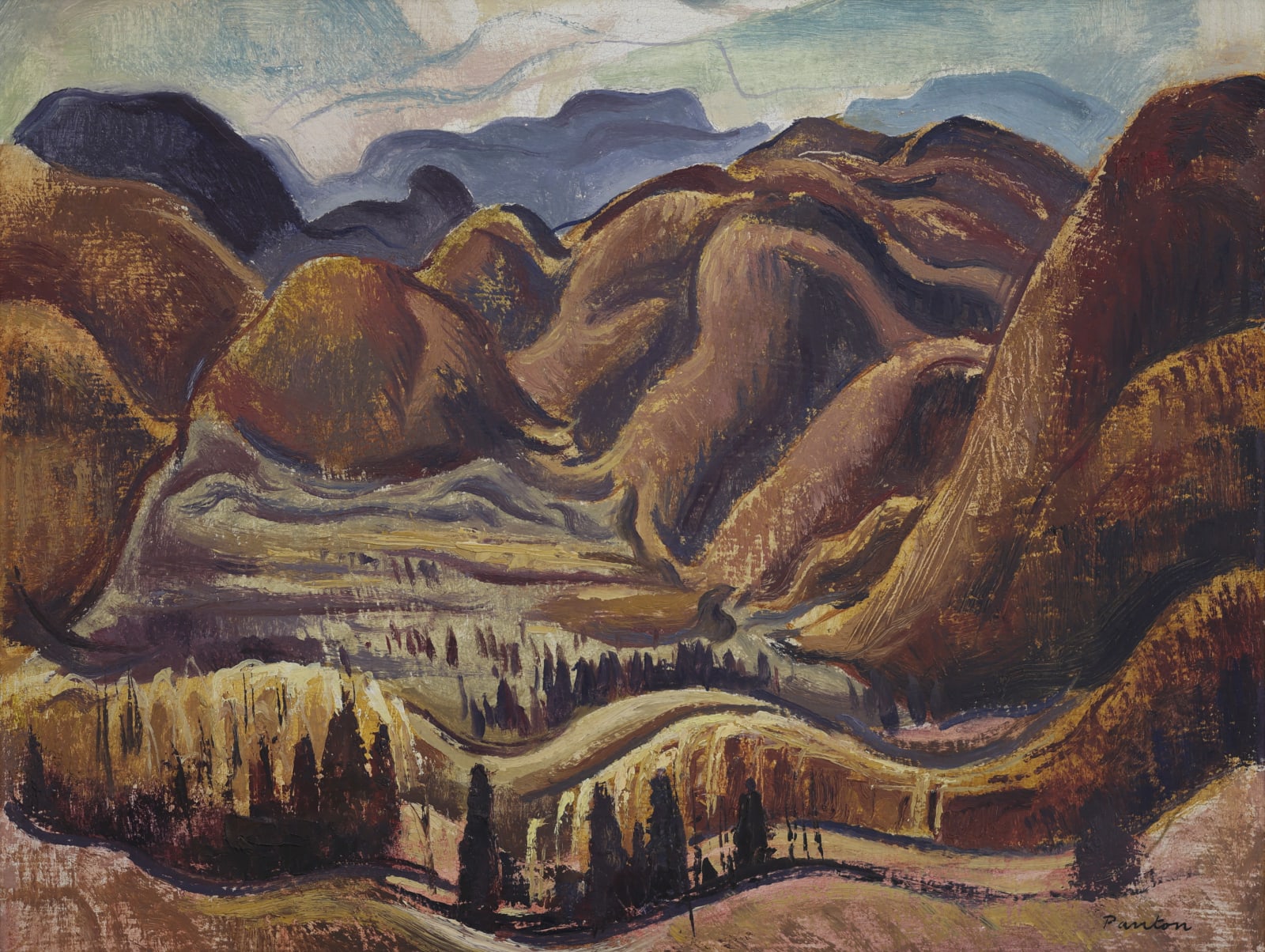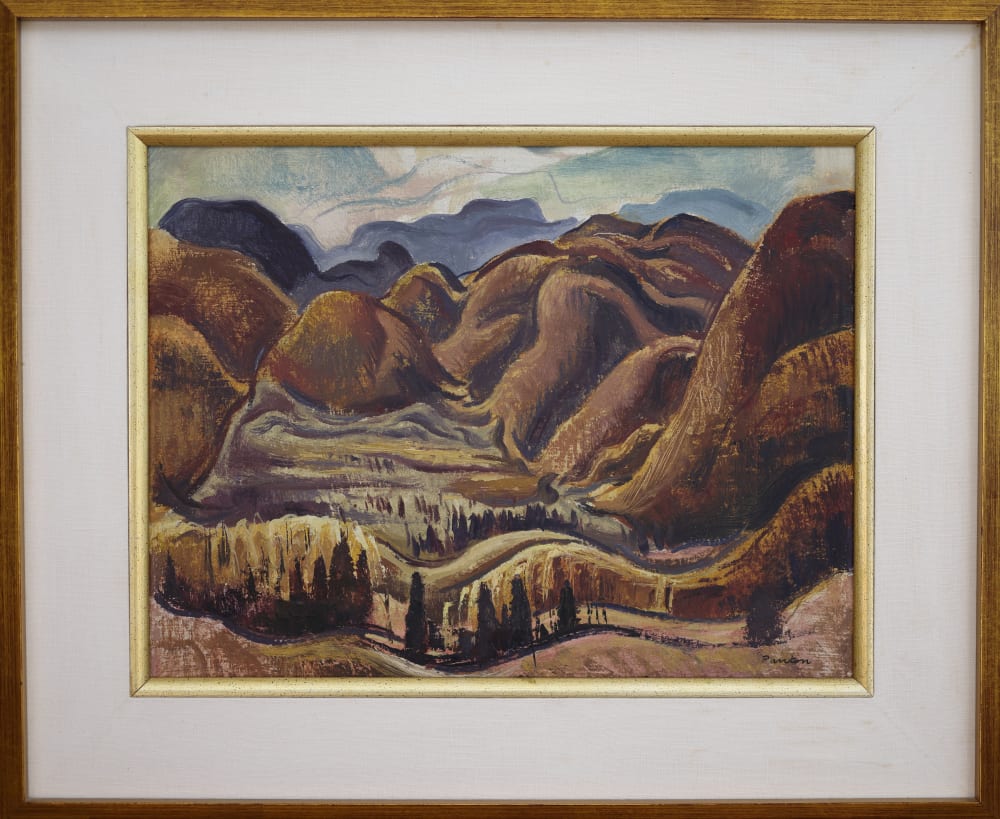L.A.C. Panton English Canadian, 1894-1954
Further images
L.A.C. Panton's Rolling Hills is a powerful and evocative landscape painting that captures the grandeur and movement of a hilly terrain. The artist's use of bold and rhythmic brushstrokes imbues the hills with a sense of undulation and vitality. The colour palette is rich with earthy tones—variations of ochre, umber, and sienna—that suggest the hills are basking in the soft, warm light, perhaps of the early morning or late afternoon.
The composition is structured in such a way that the hills seem to cascade towards the viewer, creating a dramatic sense of depth. This effect is enhanced by the play of light and shadow across their surfaces, highlighting the contours and textures of the landscape. Despite the absence of trees or vegetation on the hills themselves, there is a strip of forest in the valley that provides a stark contrast with its cooler tones of green, suggesting a ribbon of life nestled within the embrace of the hills.
In the background, the mountains rise in a succession of layered hues, transitioning from the earth tones of the hills to the cooler blues and purples of the distant peaks, giving a sense of the vastness and scale of the scene.
Panton's sky is a dynamic element of the composition, with the clouds echoing the forms of the hills below. The clouds are rendered with sweeping strokes of blue and grey, contributing to the overall feeling of movement and change within the painting.
Rolling Hills is a testament to the enduring beauty of the Canadian landscape, capturing not just the visual splendor of the hills, but also the emotional resonance of the land. It's a celebration of form, colour, and light, showcasing Panton's skill in conveying the spirit of the natural world.






